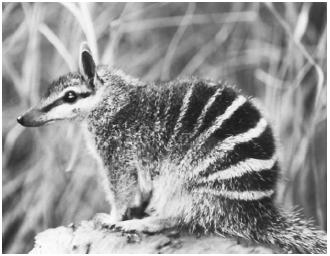Vertebrates
Vertebrates are any animals that have a backbone or spinal column. These animals are so named because nearly all adults have vertebrae, bone or segments of cartilage forming the spinal column. The five main classes of vertebrates are fish, amphibians, birds, reptiles, and mammals.
Vertebrates are the most complex of Earth's animal life-forms. The earliest vertebrates were marine, jawless, fishlike creatures with poorly developed fins. First appearing on Earth more than 500 million years ago, they probably fed on algae (single-celled or multicellular plants and plant-like animals), small animals, and decaying organic matter. The evolution of jaws, limbs, internal reproduction organs, and other anatomical changes over millions of years allowed vertebrates to move from ocean habitats to those on land.

All vertebrates have an internal skeleton of bone and cartilage or just cartilage alone. In addition to a bony spinal column, all have a bony cranium surrounding the brain. Vertebrates have a heart with two to four chambers, a liver, pancreas, kidneys, and a number of other internal organs. Most have two pairs of appendages that have formed as either fins, limbs, or wings.
[ See also Amphibians ; Birds ; Fish ; Invertebrates ; Mammals ; Reptiles ]
Comment about this article, ask questions, or add new information about this topic: